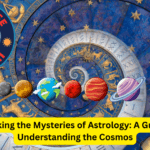In the heart of many ancient traditions lies a practice deeply rooted in spirituality and symbolism: the Homa ceremony. Dating back thousands of years, this sacred ritual holds profound significance across cultures, offering a pathway to inner purification, healing, and connection with the divine.
Unveiling the Essence of Homa
Homa, also known as Yajna or Agnihotra, is a ritualistic offering of oblations into a consecrated fire. The fire, Agni, serves as a messenger, carrying the prayers and offerings to the celestial realms. The essence of Homa lies not merely in the physical act of burning offerings but in the intention, devotion, and symbolism infused into each offering.
The Sacred Fire: Symbolism and Significance
At the heart of the Homa ceremony is the sacred fire, symbolizing the divine presence, transformation, and purification. Fire is regarded as a purifier, burning away impurities—both physical and spiritual—and paving the way for renewal and regeneration. As the flames dance and the offerings are consumed, devotees believe that negative energies are transmuted into positive vibrations, creating a conducive atmosphere for spiritual growth and elevation.
The Ritualistic Offerings: Elements of Devotion
Central to the Homa ceremony are the offerings, meticulously chosen to symbolize various aspects of life and spirituality. Ghee, grains, herbs, and aromatic substances are among the common offerings, each carrying its own symbolic significance. For instance, ghee represents purity and nourishment, grains signify abundance and sustenance, while herbs and aromatic substances evoke healing and spiritual elevation.
The Power of Mantras: Invocation and Invocation
Accompanying the offering of oblations is the chanting of sacred mantras, invoking divine energies and blessings. Mantras, comprising sacred sounds and syllables, hold immense power to focus the mind, uplift the spirit, and establish a harmonious resonance with the cosmic forces. Through repetitive chanting, participants attune themselves to higher vibrations, creating a sacred space conducive to spiritual communion and transformation.
The Inner Alchemy: Awakening the Soul
Beyond the external rituals lies the inner alchemy of Homa—an invitation to delve deep into the recesses of the soul and ignite the flame of divine consciousness. As the external fire burns brightly, it mirrors the inner fire of self-awareness and illumination. Through introspection, contemplation, and surrender, practitioners seek to transcend the limitations of the ego and align themselves with the universal flow of life.
Embracing the Tradition: Reviving Ancient Wisdom
In today’s fast-paced world, the ancient practice of Homa offers a sanctuary of serenity and spiritual nourishment. By embracing this timeless tradition, individuals can reconnect with their inner essence, cultivate mindfulness, and foster a deeper sense of interconnectedness with the cosmos. Whether performed individually or collectively, Homa serves as a potent tool for personal growth, healing, and self-realization.
Conclusion
In the tapestry of human spirituality, the Homa ceremony shines as a radiant thread, weaving together the fabric of devotion, symbolism, and transcendence. Across continents and centuries, this sacred ritual continues to beckon seekers on a journey of self-discovery and divine communion. As we kindle the flames of Homa, may we awaken to the eternal flame of consciousness that burns within, guiding us on the path to wholeness and union with the divine.



